Khmer people in An Giang, a province in Southern Vietnam have a close relationship with Khmer people in Cambodia.
The history of the Khmer people in An Giang is associated with the heroic history of the Vietnamese nation. Since An Giang’s establishment under the Nguyen Dynasty, the population was sparse until the Viet people went down reclaiming land and settling down, also several ethnic minorities immigrated according to the government’s policy changes.
During the Vietnam war, this area was the revolutionary base of the province and the bridgehead of the strategic corridor from Cambodia to the Southwest region. Therefore, the enemy focused on attacking extremely fiercely. Thanks to the Party’s wise leadership, revolutionary soldiers and Khmer people here fought bravely and won.
Come to An Giang, especially the borders areas of this province such as Tri Ton, you will have a chance to see many Khmer pagodas as a cultural icon of this area.
There are over one million Khmer people living in South Vietnam where about 600 Khmer pagodas were built. The whole life of the Khmer is associated with the pagoda. It is not only a spiritual and cultural space but also expresses the life of the locals.
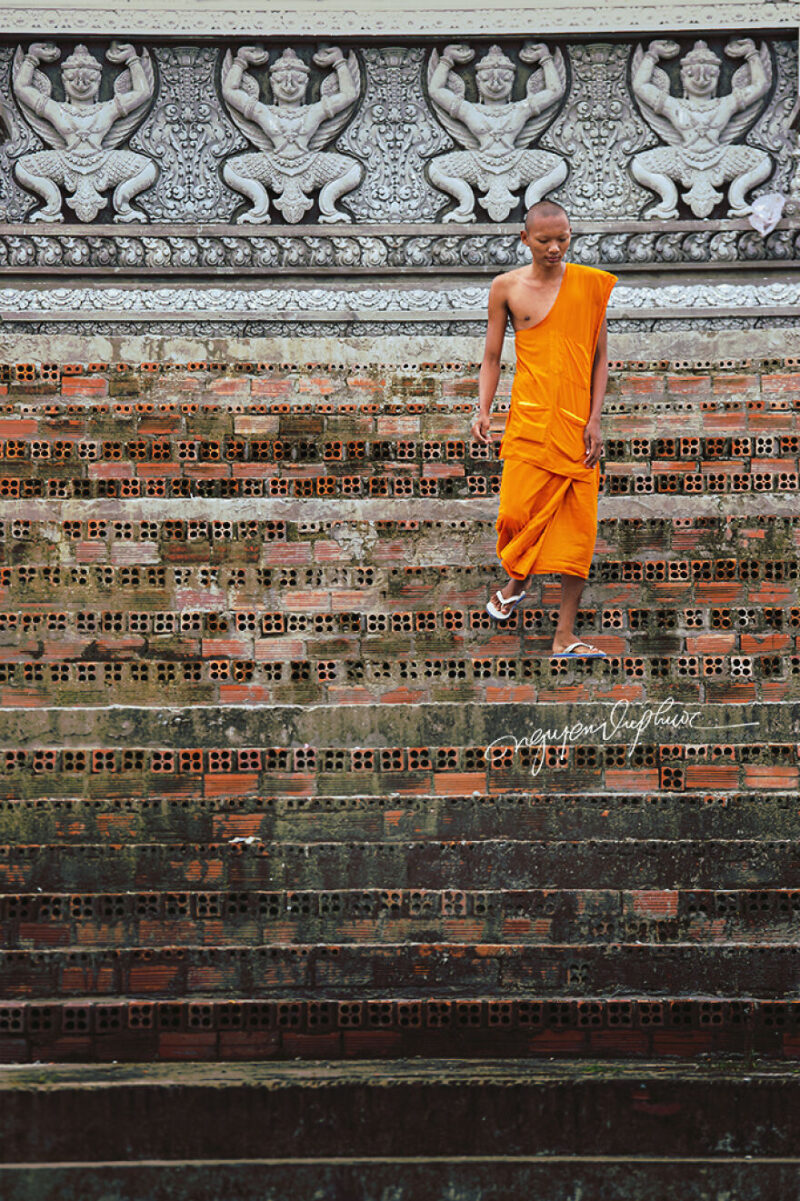
Some of the pagodas have been here for several centuries and were recognized as national architecture relics. The pagodas are always built-in large areas, surrounded by trees of Dau (Dipterocarpus alatus), Palmyra palms, or green cajuput forests.
In particular, the Palmyra palm trees have always been a common sight in the southern Vietnamese province of An Giang, and lately, they have become an important source of inspiration for hundreds of photographers hoping to capture their beauty in their throes of the flood season. Its sap also can be consumed as a drink or used as an ingredient in several local delicacies. These palms are so ubiquitous and important to the local way of life in the province’s area that they have become its unofficial symbol.
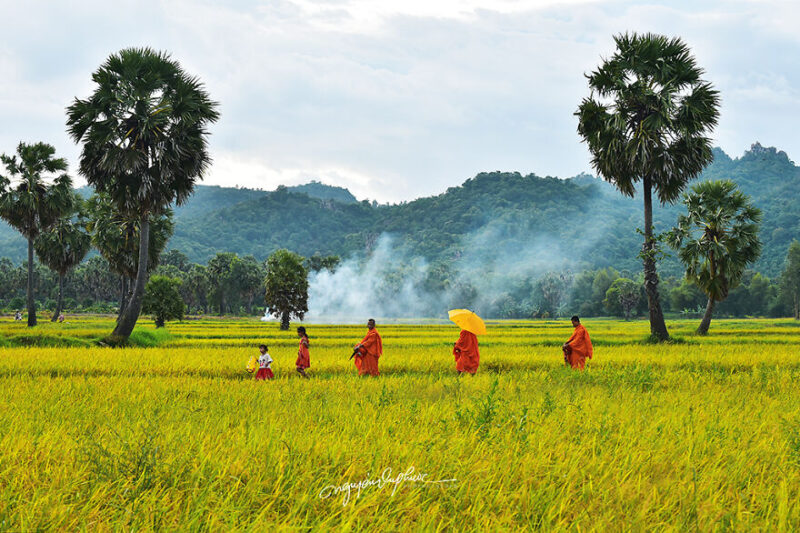
A panoramic view of a Khmer pagoda includes a gate, a fence, a wall, the main chamber, towers preserving the ashes of dead monks, and Sala – the place where monks and the Khmer people gather to prepare for important ceremonies and a monastery. The main chamber, the most important part of a pagoda is built at the center and faces the east. It is designed with a multi-layered roof which is decorated with four curved dragon’s tails on four of the roof’s corners. There are also some decorative reliefs on the walls, including a fairy, statues of Krud divine birds, Yeak ogress, and the head of the Bayon that originate from the spirit of the Khmer people. The corridor outside the main chamber is decorated with Naga snakes curving around the terrace that represents the cruel force submitted by the Buddha.
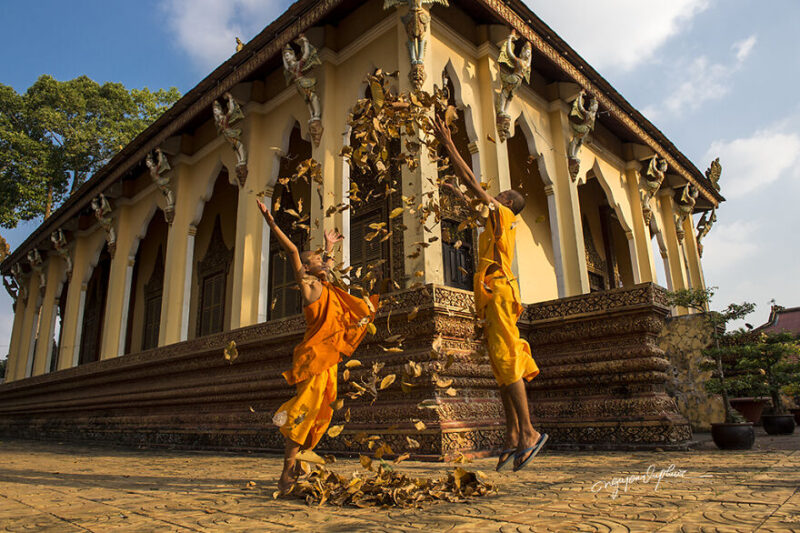
According to Khmer custom, boys who reach the age of 8 will leave their families to go to the pagoda for a while, which could be one month, one year, or forever depending on predestination, livelihood, and desire of each person, to be responsible citizens; to pay filial piety to their grandparents and parents; to pay respect to the Buddha… After the monastic’s time, they can get their parents coming to ask the monks to let them leave the pagoda and return to normal life, they can get married, do business, participate in social works, and when they want, they can go back to the pagoda.
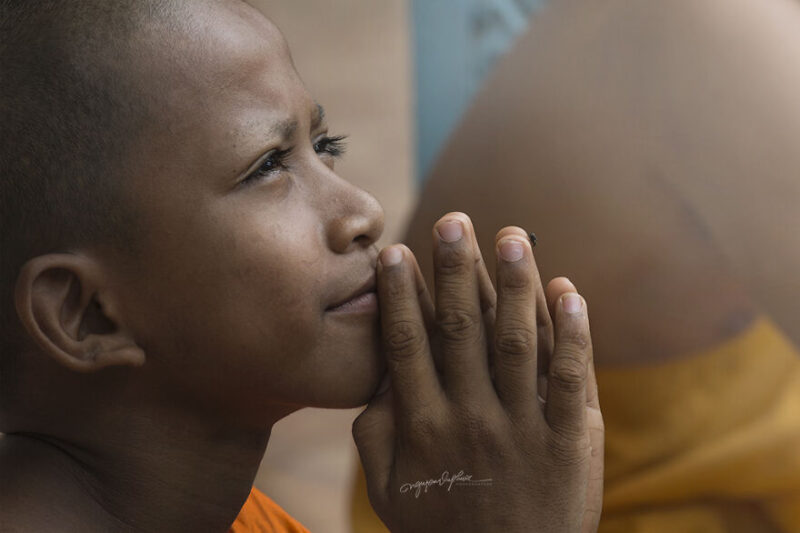
Theravada is a traditional religion of An Giang. In Theravada Buddhism, you have to be sure that any relevant problem with your parents is solved before wearing the robe. Also, you need full approval from your parents. Once you become a monk it is said that you continue to carry your mother on one shoulder and your father on the other one.
The practice of filial piety has been the chief good karma in the Buddhist moral teaching since its inception, although it is not as foundational for Buddhist ethics as it is for Confucian ethics.

Pagoda is not just a place to come for monastic but a second home to the monks, especially young boys from the lower class. As many have shared that they had to do a lot of work to help their parents and earn money rather than go to school. When they live in the pagoda though they can just study everything with the monks, they also get food and somewhere to live which is really good.
It can be said that the pagoda is a school that teaches personality, knowledge, and morality to young people so that they have basic family and social knowledge to adapt to society.
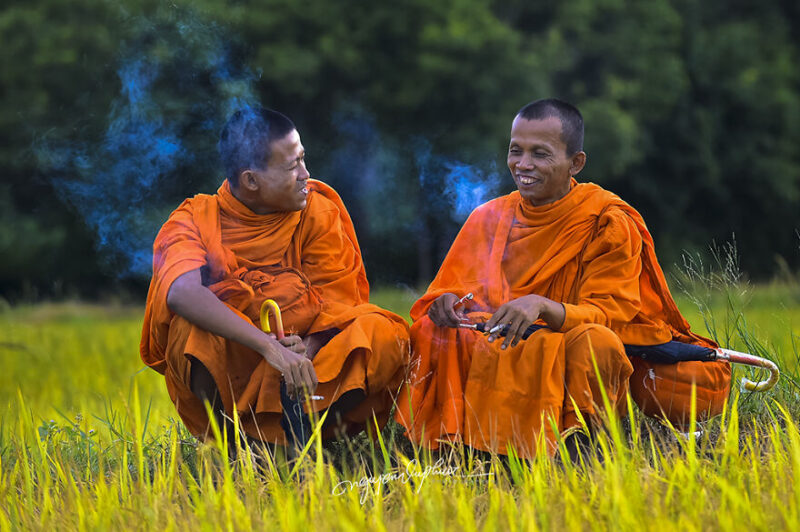
There are a lot of rules and things you must do if you live as a monk. Khmer pagodas contain residences and a hall for eating and for classes. They live a regulated lifestyle in the pagodas: there are no fewer than 227 rules to observe! Eating after midday, sleeping on a too-comfortable bed, participating in entertainment such as dancing or watching movies, and handling money are all forbidden. They apparently can’t drink alcohol but smoke. Monks are also not supposed to participate in politics, though this has changed over time; since the 1980s some Buddhist monks in Cambodia have taken an active role in politics.
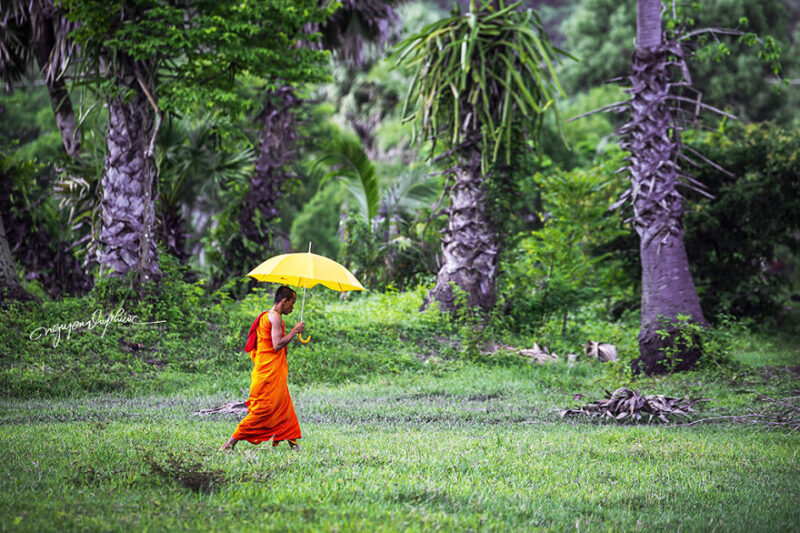
Orange or red garments, and yellow umbrellas, are recognizable signs of a Khmer monk. mMonks perform ceremonies on occasions such as births, deaths, and weddings, and more broadly they play a role in ministering to the people’s social and emotional needs, just like in other religions. In the mornings, monks leave the temple and walk the streets for alms-giving. People stop the monks and give them gifts of food, and the monks give them a blessing in return.
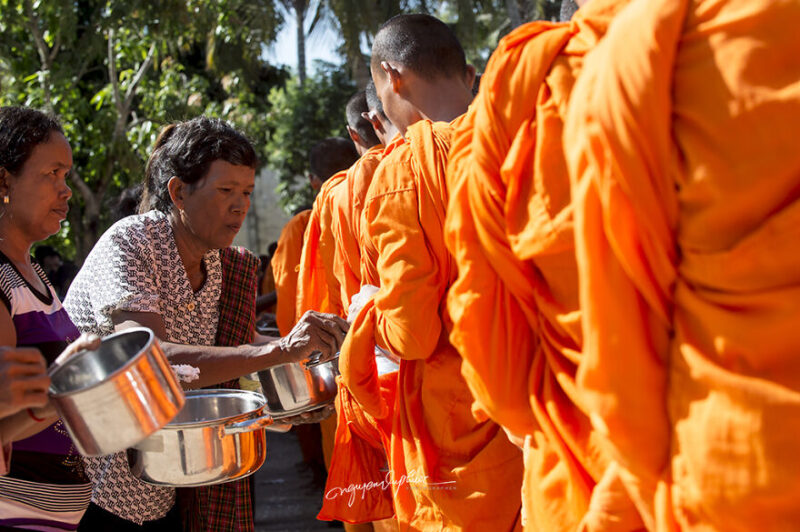
While Vietnamese is the national language, several of the country’s 54 ethnic groups, including the Khmer, have their own languages. Kinh, the major ethnic language is not used in pagodas nor in daily life of the Khmer community, although people here can learn from books to communicate with people who come from other regions.
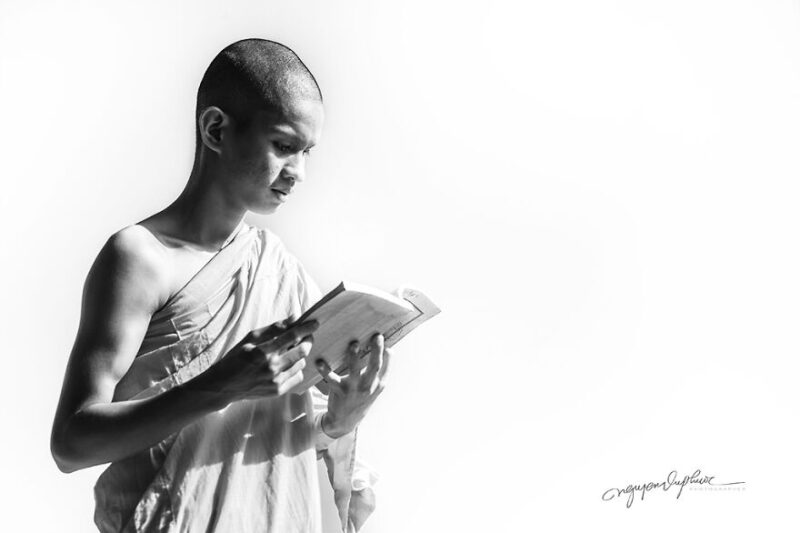
We were in the rice fields in the back of Rô pagoda, a small and poor pagoda in the area, first time for the Cow race. This is a traditional playing field on the occasion of Sene Dolta Tet (Feast of Worshiping Grandparents) taking place around August 29 – September 1 of the lunar calendar of the Khmer people in the region.
The festival is also an opportunity for photographers from all over the world to capture dramatic moments on the track. Besides the material and spiritual contributions of benefactors, local people donated their time, spirit, and effort to support the pagoda in order to preserve local culture as well as construct the pagoda.

Monks at Ro pagoda also organize the Cow race as people requested on normal occasions to raise money for the pagoda’s construction. Many of our clients were amazed by the Cow race as well as the friendly kids when they first time come here.
We took photos of them walking with monks and having fun in the lake then studying in a dark, hot, and full-of-mosquitoes classroom.
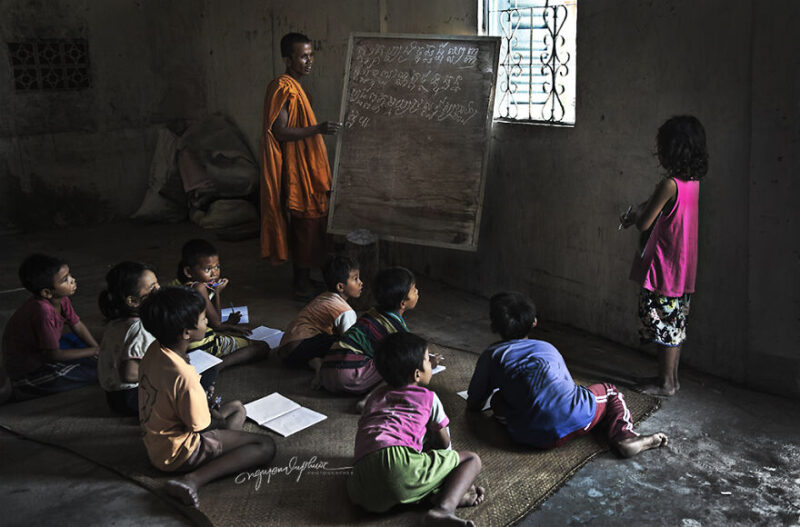
Despite the poor learning condition, the kids still have a fondness for studying. The scene touches people’s hearts that some clients decide to give some more money to the monks at Ro pagoda, hoping to have a better place for the kids to purchase their study paths.

If you have a chance to travel to Vietnam, put An Giang into your list, it won’t waste your time but add an awesome experience to your travel career.
Contact us for an awesome trip to Vietnam:
𝐀𝐍𝐓 𝐓𝐎𝐔𝐑𝐆𝐔𝐈𝐃𝐄
𝐸𝑚𝑎𝑖𝑙: anttourguide.com@gmail.com
𝐼𝑛𝑠𝑡𝑎𝑔𝑟𝑎𝑚: anttourguide_vietnam
𝑌𝑜𝑢𝑡𝑢𝑏𝑒: Ant Tourguide
𝑃𝑖𝑛𝑡𝑒𝑟𝑒𝑠𝑡: Ant Tourguide







